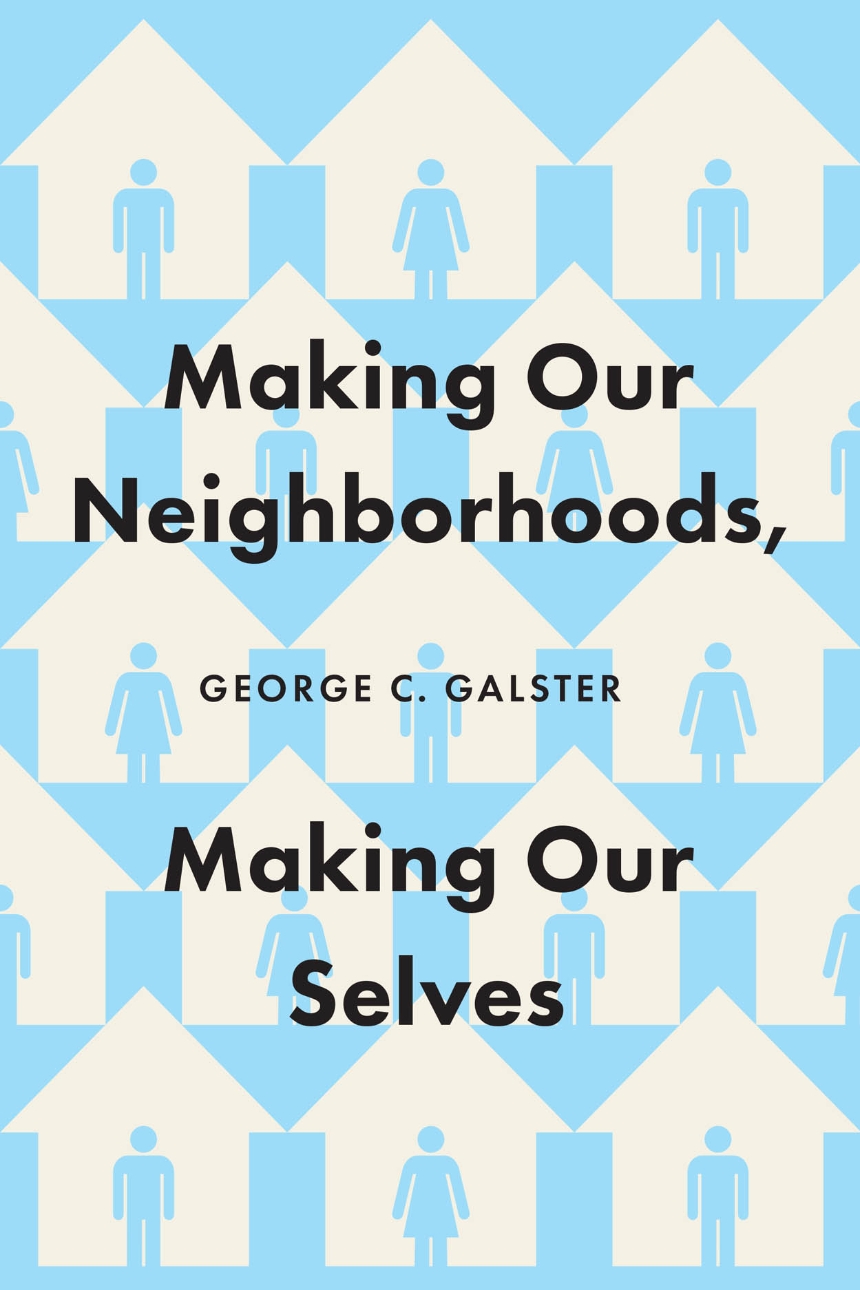Making Our Neighborhoods, Making Our Selves
Drawing on economics, sociology, geography, and psychology, Galster delivers a clear-sighted explanation of what neighborhoods are, how they come to be—and what they should be.
Urban theorists have tried for decades to define exactly what a neighborhood is. But behind that daunting existential question lies a much murkier problem: never mind how you define them—how do you make neighborhoods productive and fair for their residents? In Making Our Neighborhoods, Making Our Selves, George C. Galster delves deep into the question of whether American neighborhoods are as efficient and equitable as they could be—socially, financially, and emotionally—and, if not, what we can do to change that. Galster aims to redefine the relationship between places and people, promoting specific policies that reduce inequalities in housing markets and beyond.
Urban theorists have tried for decades to define exactly what a neighborhood is. But behind that daunting existential question lies a much murkier problem: never mind how you define them—how do you make neighborhoods productive and fair for their residents? In Making Our Neighborhoods, Making Our Selves, George C. Galster delves deep into the question of whether American neighborhoods are as efficient and equitable as they could be—socially, financially, and emotionally—and, if not, what we can do to change that. Galster aims to redefine the relationship between places and people, promoting specific policies that reduce inequalities in housing markets and beyond.
416 pages | 31 halftones, 5 tables | 6 x 9 | © 2019
Economics and Business: Economics--Urban and Regional
Geography: Urban Geography
History: Urban History
Reviews
Table of Contents
Preface / vii
PART 1. NEIGHBORHOODS: OVERARCHING FRAMES AND DEFINITIONS
ONE / Introduction / 3
TWO / The Meaning of Neighborhood / 20
APPENDIX TO CHAPTER TWO / Formal Expression of Aspects of Neighborhood / 43
PART 2. MAKING OUR NEIGHBORHOODS
THREE / The Origins of Neighborhood Change / 49
FOUR / Neighborhood Downgrading and Upgrading / 82
FIVE / Expectations, Information, Search, and Neighborhood Change / 106
SIX / Nonlinear and Threshold Effects Related to Neighborhood / 126
SEVEN / Neighborhood Segregation by Class and Race / 150
PART 3. MAKING OUR NEIGHBORHOODS
EIGHT / The Effects of Neighborhoods on Individual Socioeconomic Outcomes / 173
NINE / Neighborhoods, Social Efficiency, and Social Equity / 209
APPENDIX TO CHAPTER NINE / Mathematical Analyses of Most Efficient Social Mix with Different Neighborhood Externality Effects / 255
PART 4. REMAKING NEIGHBORHOODS FOR OUR BETTER SELVES
TEN / Toward a Circumscribed, Neighborhood-Supportive Suite of Public Policies / 263
ELEVEN / Conclusion / 301
Acknowledgments / 305
Notes / 309
References / 343
Index / 393
PART 1. NEIGHBORHOODS: OVERARCHING FRAMES AND DEFINITIONS
ONE / Introduction / 3
TWO / The Meaning of Neighborhood / 20
APPENDIX TO CHAPTER TWO / Formal Expression of Aspects of Neighborhood / 43
PART 2. MAKING OUR NEIGHBORHOODS
THREE / The Origins of Neighborhood Change / 49
FOUR / Neighborhood Downgrading and Upgrading / 82
FIVE / Expectations, Information, Search, and Neighborhood Change / 106
SIX / Nonlinear and Threshold Effects Related to Neighborhood / 126
SEVEN / Neighborhood Segregation by Class and Race / 150
PART 3. MAKING OUR NEIGHBORHOODS
EIGHT / The Effects of Neighborhoods on Individual Socioeconomic Outcomes / 173
NINE / Neighborhoods, Social Efficiency, and Social Equity / 209
APPENDIX TO CHAPTER NINE / Mathematical Analyses of Most Efficient Social Mix with Different Neighborhood Externality Effects / 255
PART 4. REMAKING NEIGHBORHOODS FOR OUR BETTER SELVES
TEN / Toward a Circumscribed, Neighborhood-Supportive Suite of Public Policies / 263
ELEVEN / Conclusion / 301
Acknowledgments / 305
Notes / 309
References / 343
Index / 393
